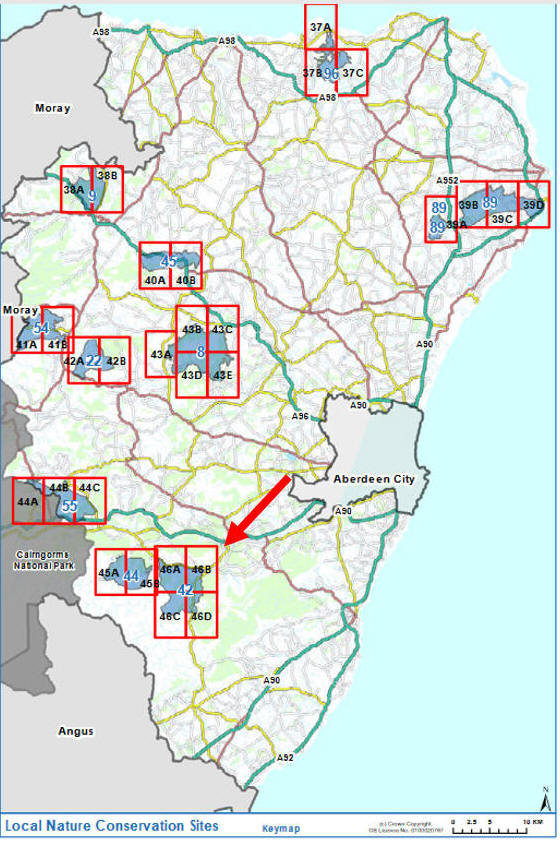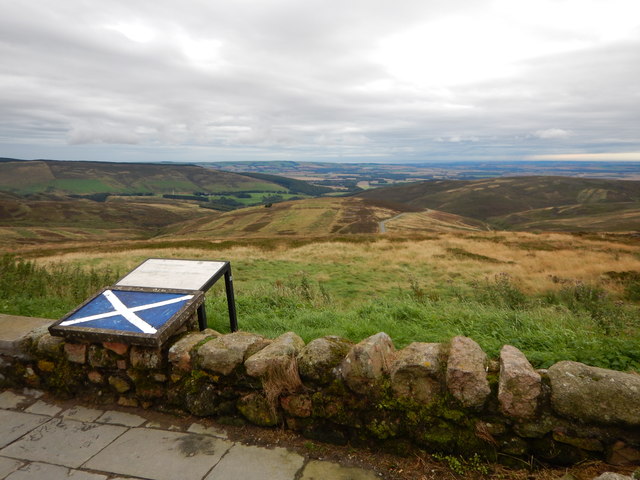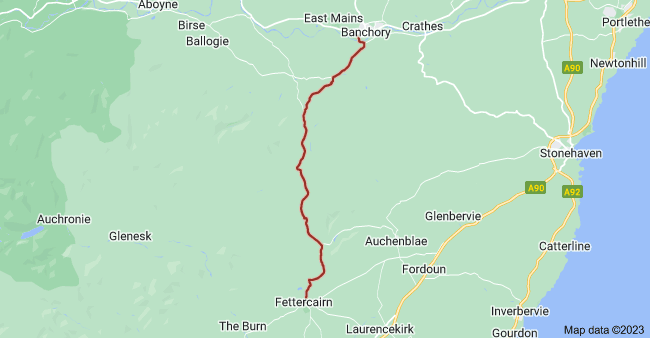History of the Cairn O'Mount
Cairn O Mounth/Cairn O Mount (Scottish Gaelic: Carn Mhon) is a high mountain pass in Aberdeenshire located at the most southern end of the Parish of Strachan. The two cairns adjacent to the B974 marked the southern border of the Parish of Strachan in 1795, and likely the medieval Barony of Strachan [1]
The place name is a survival of the ancient name for what are now call the Grampian Mountains, earlier called "the Mounth" (Gaelic: "monadh"). Before the modern A90 road was constructed, the pass served as a major crossing points for those travelling over the Grampians to Deeside and into Northern Scotland. The ancient trackway is historically known as the Cairnamounth. The high granite tor of Clachnaben overlooks the Cairn O'Mount Road (now called the B974) through the pass.
The Old Military Road, also known as the Cairn O'Mount Road (B974) runs between Strachan and Fettercairn, and has an elevation of 455m AOD. This elevation affords extensive, panoramic views out over the surrounding upland landscape, and the monuments are also highly visible features witin this landscape and a well-known landmark for modern day travellers along the modern road. [2]

National Monuments
A cairn is a manmade pile of stones raised for a purpose, as a funerary or ritual monument. The two cairns at the Cairn O'Mount are nationally listed monuments,[3 - Canmore ID: 36154] [4 - Canmore ID:36155] thought to be funerary cairns, and said to have been created in 4000 BC, during the late Neolithic period. [5] [6]

These ritual monuments are positioned in relation to distinctive topographical features such as rivers, in hills and mountains, and are located near routeways across and between different terrestrial and marine landscapes. [7]
The small cairn (Canmore ID: 36155) is located under the snow fence and closer to the Cairn O'Mount Road (B974).

NatureScot and Aberdeenshire Council Designations
The Cairn O'Mount is listed as a prominent topographical feature in NatureScot's Heritage Zone 12 of the North East Glens, particularly its open exposure and landscape viewpoint. [8]
Aberdeenshire Council has also designated these lands part of the 'The Braes of the Mearns' Special Landscape Area. The SLA is known for walking, cycling, and hillwalking. The Cairn O'Mount, in particular, is twice referred to in Aberdeenshire's SLA (page 1120) as having a scenic viewpoint on the B974. [9]

The Cairn O'Mount, it's viewpoint, and a section of the Cairn O'Mount Road (B974) are all mentioned in Aberdeenshire Council 2017 and 2023 Local Development Plan (LDP), and are part of the Feughside Conservation Area (46A, 46B, 46C, and 46D) in the map below. [10]

Also, the Cairn O'Mount scenic viewpoint, a popular stopping place on the former old military road offers views across the Howe and also views inland to the Cairngorms and northwards. [11] [12]

Cairn O'Mount Road (B974) and it History
The Cairn O'Mount Road (B974 or Old Military Road) is also of cultural and heritage importance for both Clan Strachan and Scotland. The B974 connects the village of Strachan to Clachnaben, the Cairn O'Mount, and the Howe of the Mearns.

The B974 is also
used by our clansfolk when travelling to/from Kincardine
Castle, Thornton Castle, Benholm Castle, Pseudo, and other
historic clan sites in the Mearns. The road is indeed a tangible
part of our Clan's cultural
heritage.
Referring to NatureScot, National Heritage Zones, the Cairn O'Mount Road is mentioned three times, and referred to as the 'Mounth Road' under the 'Visible History' header (subheader of 'Location/Pattern' on page 229). The road has 'renowned viewpoints' and 'permits wide views with a sense of open-ness rather than containment.' [13]
From a historic perspective, the crown has long had an affinity to Balmoral and the landscape character of this area. In 1861, Queen Victoria and Prince Albert, while on a retreat at Balmoral Castle, travelled on the Cairn O'Mount Road during their visit to Fettercairn. As with Scottish kings and queens in the past, history prominently records her love for the beauty of the natural environment in this area, which included the Cairn O'Mount Road.
Along the Cairn O'Mount road, evidence of historic settlements remains include three historic townships named as 'Charr', 'Waterhead' and 'Finglany' on historic maps of 18th century date, that lie along the section of Glen Dye between Spital Burn and Charr Bothy. They comprise the remains of houses and other buildings, surrounded by a pattern of fields and enclosures visible on the ground as low relief wall footings and earthwork banks and they lie either side of the modern Estate track that runs alongside the Water of Dye. Such settlements are relatively common survivals in many upland areas across Scotland, where modern arable farming practices have not been implemented and where the land is managed more as pastoral rough grazing or as sporting moorland.
The Cairn O'Mount Road is prehistoric, and far from being the first to have been built here. It is said to have followed the line of a military road built by General George Wade in the 1700s; and he in turn simply formalised a route that had been used by, amongst many others: the English army of Edward I in 1296; Macbeth on his way to defeat at the Battle of Lumphanan in 1057; and the Roman army of Julius Agricola in AD84.' [14] Indeed, we know that cairns were frequently built to adjacent routeways, and the cairns at the Cairn O'Mount are are situated adjacent to the B974. This suggests the Cairn O'Mount Road, with a near certainty, is of pre-historic nature and likely dates to the Neolithic Period.
Historic Environment and Cultural Heritage of Clan Strachan
The Cairn O'Mount is a site that is visited, touched, and where Clan Strachan ritual and tradition are performed, and is very tangible part of Clan Strachan and Scotland's historic environment and cultural heritage.

2019 Clan
Strachan Gathering

In recent years, we've learned that the two cairns are Neolithic burial sites, and listed as national monuments [Canmore nos. 36154 and 36155]. Clan Strachan recommends against placing stones atop the cairn, or otherwise disturbing the stones. Indeed, crawling atop a grave in most cultures today is considered inappropriate. Subsequently, preservation of the site is of utmost importance. Instead, we recommend paying respect to a long lost relative of Clan Strachan by simply placing a hand on the cairn, and if so accustom, say a short prayer or leave flowers for a long past ancestor.
Cairn O'Mount in Song
Cairn-o-Mount was originally published in 1820 as a poem titled "Donald. a ballad" by Alexander Balfour of Monikie near Forfar.
|